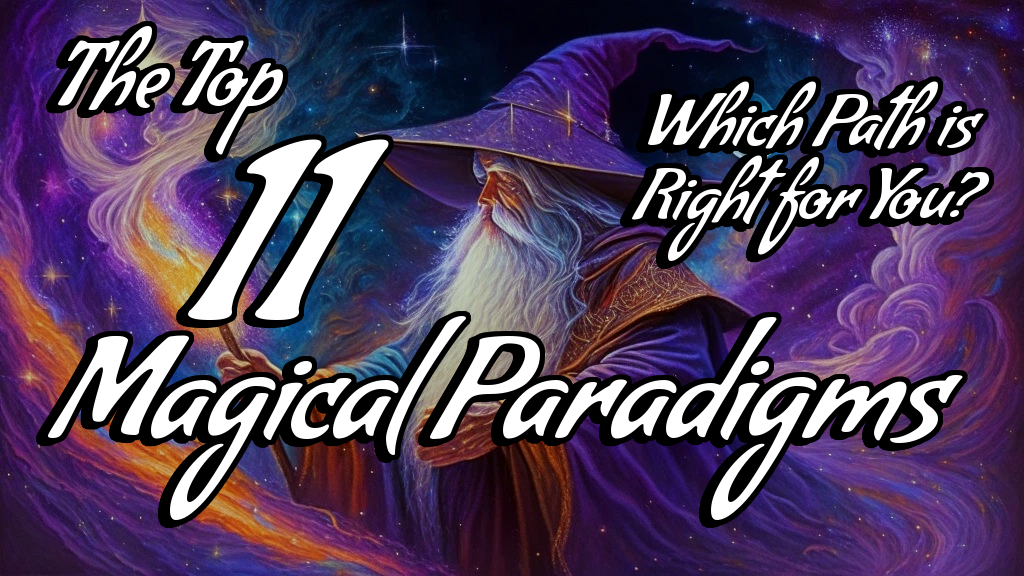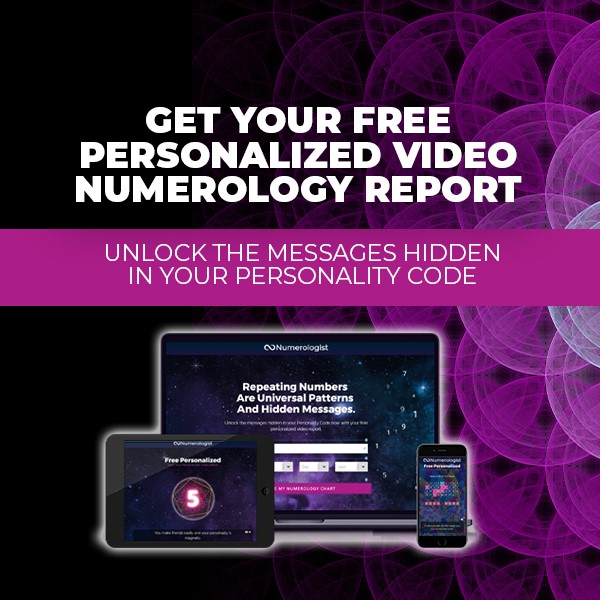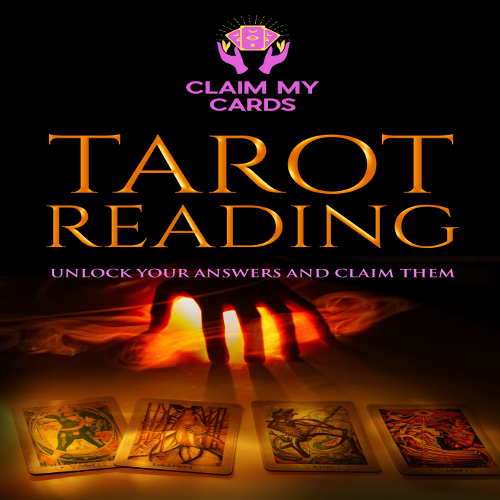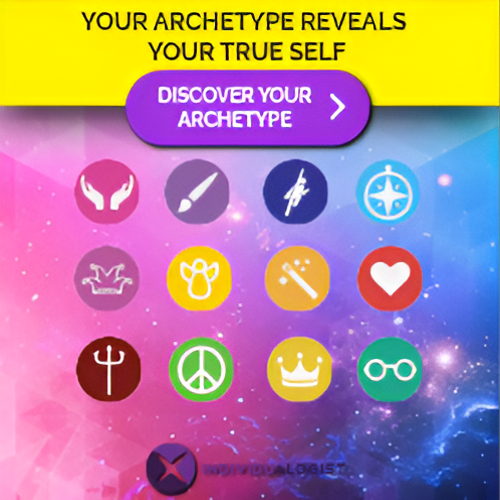In the vast tapestry of human belief systems, paradigms serve as guiding frameworks that shape our understanding of the world and our place in it. Paradigms help us make sense of complex ideas, from the realms of science to philosophy and culture. But what about paradigms that explore the mystical and the inexplicable? Join us as we embark on a journey through the diverse realms of magical paradigms, each offering its own path to the mysteries of the cosmos.
What is a Paradigm?
Before we delve into the intriguing universe of magical paradigms, let’s first understand what a paradigm is. In essence, a paradigm is a model, a set of beliefs, or a way of viewing reality that influences our thoughts, actions, and interpretations. It provides the lens through which we perceive the world.
For instance, in the realm of science, the shift from a geocentric paradigm (where Earth was believed to be at the center of the universe) to a heliocentric one (where the Sun takes center stage) transformed our understanding of the cosmos. Similarly, paradigms exist in philosophy, politics, and culture, shaping our perceptions and molding our choices.
The Enigmatic World of Magick
Now, let’s turn our attention to magick—an enigmatic domain that has intrigued, perplexed, and inspired humanity for centuries. Note the deliberate spelling of “magick” with a ‘k,’ as opposed to “magic” with a ‘c.’ This unconventional spelling, popularized by the infamous occultist Aleister Crowley, distinguishes ritual magick from the stage illusions society usually associates with with the term “magic.”
Despite its rich history and diversity, magick is still largely misunderstood. Some see it as superstitious nonsense, others as a dark and malevolent practice. Yet, at its core, magick is a tool, a force that can be harnessed for various purposes, both positive and negative. It’s akin to a double-edged sword, capable of creating beauty or destruction, depending on the intent of the wielder.
Imagine a simple knife. In the hands of a chef, it transforms into an instrument of culinary artistry, creating exquisite dishes. In the hands of a skilled surgeon, it becomes a lifesaving implement. Yet, in the hands of someone with ill intent, it can cause severe harm or even death.
Magick operates in a similar manner. It is a versatile and multifaceted tool that can be channeled through different paradigms. Each paradigm offers a unique perspective, a distinct set of beliefs and practices, and a pathway to understanding and harnessing the forces at play.
But how does one navigate this mystical landscape? Which paradigm calls to your inner magician?
Magical Paradigms: Exploring the Different Paths
As we venture deeper into the realm of magick, we encounter a fascinating array of paradigms, each offering a unique perspective on how to work with and understand this mystical force. These paradigms serve as roadmaps for magicians, guiding their beliefs, rituals, and intentions.
Before we dive into the specific paradigms, it’s important to acknowledge that magical paradigms often interweave and overlap. Paradigms within paradigms exist, sharing fundamental principles or concepts while maintaining their individual identities. This interconnectedness can be likened to a tapestry, where threads of belief and practice cross over, enriching the overall fabric of magick.
Each paradigm represents a unique approach to understanding and harnessing the mysteries of magick. As we journey through these diverse belief systems, keep an open mind, for magick is as much about personal resonance as it is about tradition.
Let’s start with a brief overview of each paradigm, then we’ll explore each paradigm in greater detail:
- The Supernatural Paradigm: Rooted in tradition, this paradigm encompasses beliefs in spirits, Gods, entities, religion, the occult, mysticism, the afterlife, and embodying what many envision when they think of ritual magick or witchcraft.
- The Psychological Paradigm: At its core, magick here aligns with the idea that All is mind, and consciousness is the fundamental essence of existence. It explores how influencing the subconscious mind can lead to manifestation, emphasizing the interconnectedness of the subconscious and superconscious minds.
- The Dreamwalker Paradigm: Navigating the Realms of Dreams and Consciousness, this paradigm explores the profound connection between dreams, lucid dreaming, and altered states of consciousness. It considers dreams as gateways to mystical experiences and personal transformation.
- The Psychedelic Paradigm: Exploring Altered States and Expanded Consciousness, this paradigm utilizes psychoactive substances to induce altered states of consciousness, spiritual insights, and mystical experiences. It bridges the realms of the mind, nature, and plant medicines to access hidden realms of knowledge.
- The Energetic Paradigm: Focused on the mastery of life force energy, this paradigm delves into understanding and manipulating what is known in Eastern cultures as qi, ki, or prana, the vital energy that flows through all living things.
- The Quantum Paradigm: Drawing from the principles of quantum physics, this paradigm explores the interconnectedness of all things at the quantum level, allowing practitioners to influence reality by working with quantum phenomena.
- The Simulation Paradigm: Inspired by the idea that reality is holographic and functions like a simulation, this paradigm views reality as composed of information. Practitioners believe that mastering the right information allows them to shape and manipulate reality itself. This paradigm delves into manipulating and encoding information to produce magical results, effectively “hacking” the universe’s code.
- The Technological Paradigm: Merging Magick with Technology, this paradigm embraces modern advancements to enhance and amplify mystical practices. It explores the synergy between magick and technology, incorporating digital rituals, augmented reality, and data magick into its methods.
- The Multiversal Paradigm: Encompassing the existence of multiple universes or dimensions, each with its unique rules, this paradigm involves traversing these realms, tapping into alternate realities, and drawing power from different dimensions.
- The Temporal Paradigm: Rooted in the manipulation of time itself, this paradigm explores time dilation, retrocausality, and other temporal phenomena to achieve magical outcomes.
- The Eclectic Paradigm: This paradigm embraces the idea of combining elements from various paradigms, forging a personalized and flexible path to magick. It draws upon the wisdom of multiple paradigms, allowing practitioners to craft their own unique approach.
These 11 are just a few of the paradigms which offer a glimpse into the rich tapestry of magical thought. As we delve deeper into each, you’ll gain a better understanding of their core principles, beliefs, and practices.
1. The Supernatural Paradigm: Embracing the Mystical
The Supernatural Paradigm is an age-old belief system deeply rooted in the mysteries of the unseen. It revolves around the acknowledgment of entities and forces beyond our physical realm, providing a bridge that connects the natural and the supernatural worlds.
Spirits, Gods, and Supernatural Beings
Central to this paradigm is the recognition of spirits, deities, and other mystical entities as potent forces capable of influencing our physical world. Through practices such as rituals, offerings, and invocations, practitioners aim to establish a connection with these entities, seeking their guidance or intervention.
Rituals and Ceremonies
Rituals form a crucial component of the Supernatural Paradigm. Adherents engage in carefully crafted ceremonies, using specific incantations, symbols, and gestures to communicate with the spiritual realm. These ceremonies often involve offerings and are conducted observing sacred timings to maximize their effectiveness.
Divination Practices
The Supernatural Paradigm also incorporates various forms of divination as a means to seek divine insights. Tarot card reading, scrying, astrology, and other divination methods are employed to interpret messages from the spiritual world, guiding practitioners in their spiritual journey.
Skepticism and Misunderstandings
The Supernatural Paradigm often faces skepticism and misunderstanding from those who view it as superstition or even as a malevolent practice. This misconception can be attributed to a lack of understanding or a fear of the unknown. It’s important to note that, for many practitioners, the Supernatural Paradigm is a deeply spiritual and empowering path that seeks to connect with higher forces for positive transformation and insight.
2. The Psychological Paradigm: Unveiling the Power of the Mind
The Psychological Paradigm represents a fascinating approach to magick, one that places the mind at the center of transformative change. In this paradigm, the understanding that “All is mind” serves as a fundamental principle, with consciousness as the primary tool for shaping reality.
The Power of Belief and the Subconscious Mind
The Psychological Paradigm stresses the potency of beliefs, asserting that they can significantly influence outcomes. Hence, practitioners work diligently to nurture empowering beliefs. Emphasis is also placed on the subconscious mind, which is considered a driving force behind our behaviors and experiences. By accessing and reprogramming the subconscious, practitioners aim to bring about profound changes and manifestation.
Practitioners of this paradigm explore the interplay between conscious and subconscious states of mind. They recognize that consciousness is multifaceted, with layers that extend beyond the everyday awareness. By delving into these deeper layers, they aim to uncover hidden potentials and untapped resources.
The Psychological Paradigm often intersects with psychological principles, drawing insights from fields such as cognitive psychology, neurology, and behavioral science. This integration highlights the connection between magick and the workings of the human mind.
3. The Dreamwalker Paradigm: Navigating the Realms of Dreams and Consciousness
The Dreamwalker Paradigm offers a unique approach to magick, specifically focusing on dreams, lucid dreaming, astral projection, and altered states of consciousness as gateways to mystical experiences. Rituals and ceremonies may be conducted within the dream state to connect with dream entities, seek answers to questions, or perform magickal workings. This paradigm explores the profound interconnection between the dream world and waking reality.
Dreams as Alternate Realities
At the heart of the Dreamwalker Paradigm is the belief that dreams are not mere fantasies but alternate realities with their unique landscapes and rules. Dream experiences, therefore, are considered as valid as waking experiences.
Lucid Dreaming and Dream Guides
Practitioners within this paradigm work towards mastering lucid dreaming, where one gains awareness of the dream state while dreaming. This awareness allows for the conscious exploration and manipulation of dreamscapes. Additionally, there is a belief in dream guides, spirits, or entities that can offer guidance and insights during dream experiences.
4. The Psychedelic Paradigm: Exploring Altered States and Expanded Consciousness
The Psychedelic Paradigm represents a unique approach to magick that centers on the use of psychoactive substances, such as psychedelics and entheogens, as tools for achieving altered states of consciousness and mystical experiences.
The Mind as a Gateway to Transcendent Experiences
Central to this paradigm is the belief that the mind is a gateway to transcendent experiences. Practitioners often engage in rituals or ceremonies involving psychedelic substances to alter their perception of reality and seek insights and revelations.
Use of Natural Psychedelics
Within this paradigm, the use of natural psychedelics, often derived from plants, is common practice. These substances are believed to facilitate communion with the spirit of the Earth and provide a deeper connection with the natural world.
Practitioners engage in structured ceremonies, often led by experienced guides or shamans, where natural psychedelics like Ayahuasca, Psilocybin mushrooms, or Peyote are ingested to induce altered states of consciousness.
5. The Energetic Paradigm: Harnessing the Life Force
The Energetic Paradigm is based on the belief that a vital life force, known by various names such as qi, ki, or prana, flows through all living things. Practitioners focus on understanding, harnessing, and manipulating this energy to achieve magical goals.
Life Force Energy and Energy Channels
Central to the Energetic Paradigm is the concept of life force energy, seen as the essence that sustains life. This energy is believed to permeate all living beings, connecting them to each other and to the universe. Practitioners work with the body’s energy channels or meridians to unblock and balance the flow of this life force energy.
Working with Chakras and Energy Healing
A significant aspect of the Energetic Paradigm involves working with the chakras and other energy centers within the body. By harmonizing these centers, practitioners aim to achieve physical, emotional, and spiritual well-being. They often engage in healing modalities such as Reiki, Pranic Healing, and Qigong to restore balance to the body’s energy system and promote holistic well-being.
6. The Quantum Paradigm: Unveiling Reality’s Mysteries
The Quantum Paradigm offers a fascinating intersection of magick and the enigmatic world of quantum physics. This paradigm explores the idea that all things in the universe are interconnected at the quantum level, and that magicians can harness this interconnectedness to influence reality.
Quantum Interconnectedness and the Observer Effect
A fundamental principle of the Quantum Paradigm is the belief in quantum interconnectedness, often referred to as non-locality. This concept suggests that particles at the quantum level can instantaneously affect each other, regardless of distance. The “observer effect” is another cornerstone of this paradigm, which emphasizes the role of consciousness in shaping reality, as made famous by the double-slit experiment.
Quantum Entanglement
Quantum entanglement is another cornerstone of this paradigm. It posits that particles once entangled remain connected, even when separated by vast distances. Magicians use the concept of entanglement to establish connections and influence events.
Quantum Probability Theory
This paradigm draws from quantum probability theory, where outcomes are seen as probabilities rather than certainties. Practitioners work with probability waves to shift the likelihood of specific events occurring.
7. The Simulation Paradigm: Navigating the Illusion of Reality and Hacking the Matrix
Just like in the popular film “The Matrix”, The Simulation Paradigm explores the intriguing relationship between our perceived reality as a simulation or information-based construct, and the ability to manipulate this reality through the understanding and application of information.
The Universe as a Holographic Simulation
Central to this paradigm is the belief that the physical reality we perceive is akin to a holographic simulation. It operates on the premise that reality is composed of information and that the universe functions as a vast, interconnected information system.
Hacking the Universe’s Code
A central tenet of this paradigm is the concept of “hacking” the universe’s code. Practitioners explore various techniques and practices to alter the informational framework of reality, effectively rewriting the program that governs the world.
8. The Technological Paradigm: Merging Magick with Technology
The Technological Paradigm represents a contemporary and forward-looking approach to magick that leverages cutting-edge technologies to enhance and amplify mystical practices.
Magick and Technology as Synergistic Forces
At the heart of this paradigm is the belief that magick and technology can synergize to create new possibilities. It acknowledges that technology has become an integral part of modern life and can serve as a powerful tool for magical practices.
The Use of Digital Platforms
Practitioners within this paradigm utilize digital platforms, augmented reality, and virtual reality to conduct rituals, ceremonies, and visualization exercises. These can range from virtual temples to immersive 3D experiences that enhance the magical atmosphere. Sigils and symbols can be overlaid onto the physical world using augmented reality technology, allowing practitioners to interact with magical symbols in real-time. Techniques within this paradigm involve the use of data and algorithms to encode and amplify intentions.
9. The Multiversal Paradigm: Navigating Infinite Realms
The Multiversal Paradigm takes us on a journey beyond the confines of our known reality. Within this paradigm, magicians embrace the belief that multiple universes or dimensions exist, each with their unique rules and possibilities.
Existence of Countless Parallel Universes
At the core of the Multiversal Paradigm is the concept of the multiverse, which suggests that countless parallel universes exist alongside our own. Each of these universes operates under slightly or significantly different laws of physics.
Traversing Between Dimensions or Universes
Practitioners believe in the ability to traverse between dimensions or universes. They may employ meditation, astral projection, ritual, or other methods to access these alternate realms.
Otherworldly Entities
The Multiversal Paradigm posits that beings from other dimensions or universes can interact with our reality. Magicians seek to establish connections with these entities, drawing upon their unique perspectives and abilities.
10. The Temporal Paradigm: Manipulating the Flow of Time
The Temporal Paradigm represents a magical path that delves into the mysteries of time itself. Within this paradigm, magicians explore the concepts of time dilation, retrocausality, and other temporal phenomena as they seek to influence events past, present, and future.
Time as a Malleable Force
Central to the Temporal Paradigm is the belief that time is not an immutable river but rather a malleable force that can be influenced. Practitioners see the past, present, and future as interconnected and accessible.
Time Dilation and Retrocausality
Time dilation, a concept from Einstein’s theory of relativity, is a key element of this paradigm. Magicians work with altered states of consciousness to dilate time, potentially experiencing longer or shorter periods within subjective moments. The Temporal Paradigm also explores the idea of retrocausality, where future events can influence past events.
11. The Eclectic Paradigm: Forging a Personalized Path
The Eclectic Paradigm stands as a versatile and inclusive magical path that encourages practitioners to weave together elements from various paradigms. This approach empowers individuals to craft a personalized, flexible, and ever-evolving magical journey tailored to their unique beliefs, preferences, and goals.
No One-Size-Fits-All Approach to Magick
The Eclectic Paradigm celebrates the idea that there is no one-size-fits-all approach to magick. It encourages practitioners to explore, adapt, and incorporate aspects from multiple paradigms to suit their needs. Eclectic magicians seek a holistic understanding of the mystical arts. They believe that by drawing from diverse traditions and practices, they can gain a more comprehensive perspective on the multifaceted nature of magick.
Personal Exploration and Self-Discovery
This paradigm emphasizes personal exploration and self-discovery. Practitioners are encouraged to experiment, evolve, and refine their magical practices based on their experiences and insights.
The Eclectic Paradigm naturally integrates with all other paradigms. It is a harmonious tapestry woven from the threads of diverse magical traditions and beliefs. Eclectic practitioners may choose to explore and incorporate aspects of any paradigm that resonates with them.
Choosing Your Path
As we’ve journeyed through the labyrinth of magical paradigms, you’ve had the opportunity to glimpse the diverse avenues that seekers of the mystical may traverse. Now, the time has come to consider how you can embark on your own magical journey, one that resonates with your beliefs, aspirations, and inclinations.
Choosing a magical path is a deeply personal and empowering decision. Here are some insights to help you navigate this transformative process:
Begin by reflecting on your beliefs, interests, and intentions. What draws you to the world of magick? Are you seeking personal transformation, healing, or spiritual growth? Understanding your motivations will guide your path.
Don’t be afraid to explore various paradigms. The paradigms we’ve explored are just the tip of the mystical iceberg. There are countless traditions, practices, and belief systems waiting to be discovered.
Pay attention to what resonates with you on a deep level. Magick is as much about intuition and personal connection as it is about theory. Trust your instincts when a particular paradigm or practice speaks to your heart.
Keep in mind that your magical path can evolve over time. It’s not uncommon for practitioners to start with one paradigm and gradually incorporate elements from others as they grow and learn.
Seek out mentors, teachers, or magical communities that align with your chosen path. Learning from experienced practitioners can provide guidance and support on your journey.
Magick is a hands-on practice. Don’t hesitate to experiment with rituals, spells, and techniques. Practical experience will deepen your understanding and connection with your chosen path.
Remain open-minded and respectful of other practitioners and paradigms. The magical world is vast and diverse, and there is much to learn from different perspectives.
Remember that there’s no rush in choosing your magical path. Take the time you need to explore, learn, and grow. Your journey is as individual as your fingerprint, and it unfolds at your own pace. Whether you find resonance in the traditional, the avant-garde, or somewhere in between, the world of magical paradigms awaits your exploration.
Our journey through the intricate tapestry of magical paradigms has been a voyage of discovery and wonder. From the Supernatural Paradigm, rooted in tradition, to the mind-bending possibilities of the Quantum Paradigm, each paradigm has offered a unique lens through which to perceive and interact with the mystical forces that surround us.
The diversity of paradigms we’ve encountered demonstrates that there is no one-size-fits-all approach to magick. Your path is a personal journey, one that should resonate with your beliefs and aspirations.
As you embark on your magical journey, remember the importance of self-reflection, exploration, and open-mindedness. Trust your instincts and allow your path to evolve as you grow and learn. Seek guidance from mentors, embrace practical experience, and respect the wisdom of traditions.
Whether you choose a singular paradigm that deeply resonates with your soul or embark on a dynamic journey of eclectic synthesis, know that the magical realms are rich with mysteries waiting to be uncovered. Your magical path is a testament to your uniqueness, a canvas upon which you can paint the story of your spiritual and mystical evolution.
We hope this exploration of magical paradigms has sparked your curiosity and provided you with insights to guide your own path. May your magical journey be filled with wonder, transformation, and the boundless potential of the human spirit.
As you step into the realms of magick and mystery, may you find the wisdom and power to manifest your deepest desires and uncover the hidden truths of the universe.





